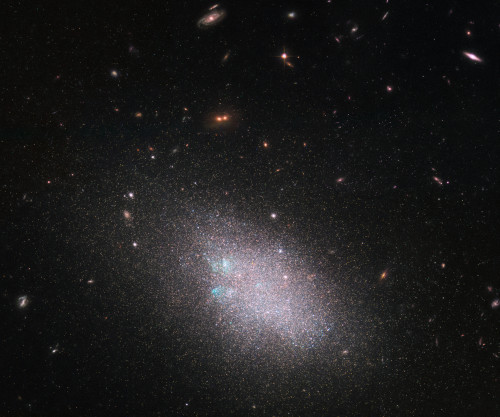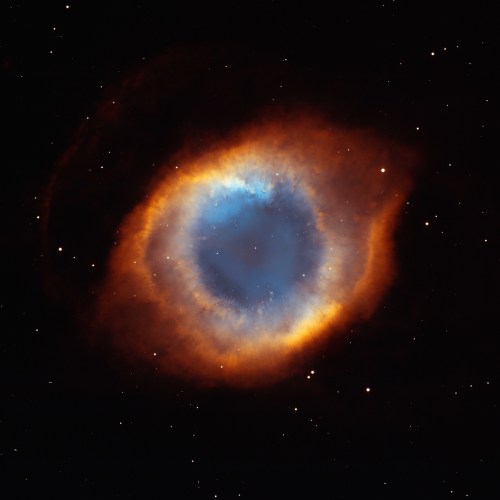Experience Tumblr like never before
Space Pics - Blog Posts

Look! A cosmic block party 🥳 In this Hubble image, you’ll find 50 spiral and dwarf galaxies hanging out in our cosmic neighborhood. The main focal point of stars is actually a dwarf galaxy. Dwarf galaxies often show a hazy structure, an ill-defined shape and an appearance somewhat akin to a swarm or cloud of stars — and UGC 685 is no exception to this. These data were gathered under Hubble’s Legacy ExtraGalactic UV Survey (LEGUS) program, the sharpest and most comprehensive ultraviolet survey of star-forming galaxies in the nearby universe. Image Credit: ESA/Hubble & NASA; the LEGUS team, B. Tully, D. Calzetti
Make sure to follow us on Tumblr for your regular dose of space: http://nasa.tumblr.com

Say hello to the Butterfly Nebula 👋
It looks like our Hubble Space Telescope captured an image of a peaceful, cosmic butterfly unfurling its celestial wings, but the truth is vastly more violent. In the Butterfly Nebula, layers of gas are being ejected from a dying star. Medium-mass stars grow unstable as they run out of fuel, which leads them to blast tons of material out into space at speeds of over a million miles per hour!
Streams of intense ultraviolet radiation cause the cast-off material to glow, but eventually the nebula will fade and leave behind only a small stellar corpse called a white dwarf. Our middle-aged Sun can expect a similar fate once it runs out of fuel in about six billion years.
Planetary nebulas like this one aren’t actually related to planets; the term was coined by astronomer William Herschel, who actually discovered the Butterfly Nebula in 1826. Through his small telescope, planetary nebulas looked like glowing, planet-like orbs. While stars that generate planetary nebulas may have once had planets orbiting them, scientists expect that the fiery death throes these stars undergo will ultimately leave any planets in their vicinity completely uninhabitable.
Make sure to follow us on Tumblr for your regular dose of space: http://nasa.tumblr.com.

Say hello to the Helix Nebula 👋
In 2001 and 2002, our Hubble Space Telescope looked at the Helix Nebula and it looked right back! This planetary nebula is right in our cosmic neighborhood, only about 650 light-years away. Gigantic for this type of cosmic object, the Helix Nebula stretches across 2 to 3 light-years.
With no actual connection to planets, planetary nebulas like this one are produced when a medium-mass star dies and sloughs off its outer layers. These gaseous layers are expelled into space at astonishing speeds where they light up like fireworks. The Helix Nebula is one of the closest planetary nebulas to Earth, giving scientists an up-close view of its strange affairs.
Through Hubble’s observations, scientists have learned that the Helix Nebula isn’t doughnut-shaped as it appears. Instead it consists of two disks that are nearly perpendicular to each other — the nebula looks like an eye and bulges out like one too!
Hubble has also imaged comet-like tendrils that form a pattern around the central star like the spokes on a wagon wheel, likely resulting from a collision between gases. The dying star spews hot gas from its surface, which crashes into the cooler gas that it ejected 10,000 years before. Eventually the knots will dissipate into the cold blackness of interstellar space.
Make sure to follow us on Tumblr for your regular dose of space: http://nasa.tumblr.com.